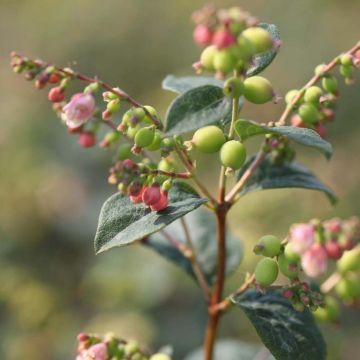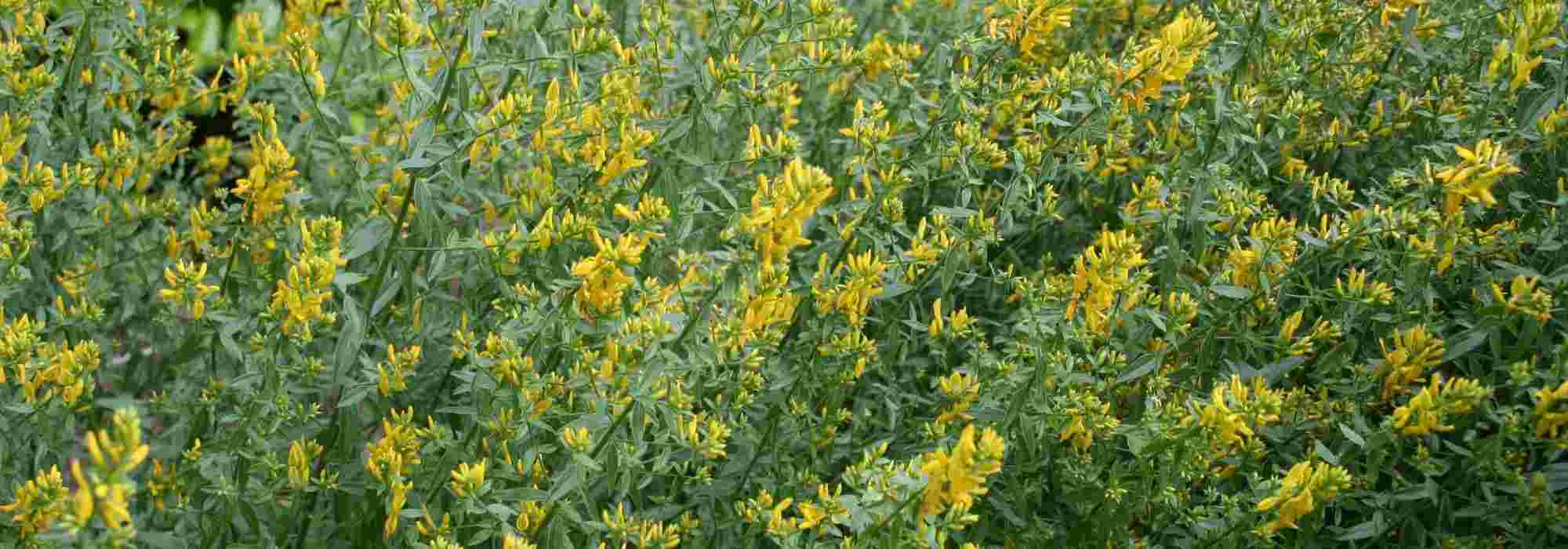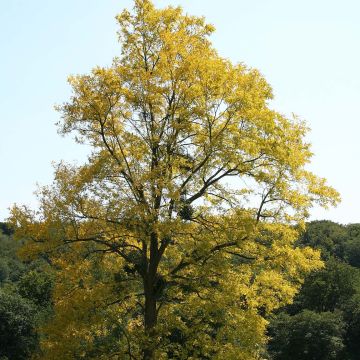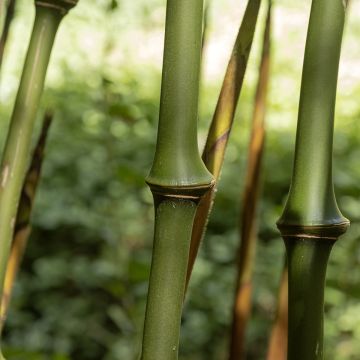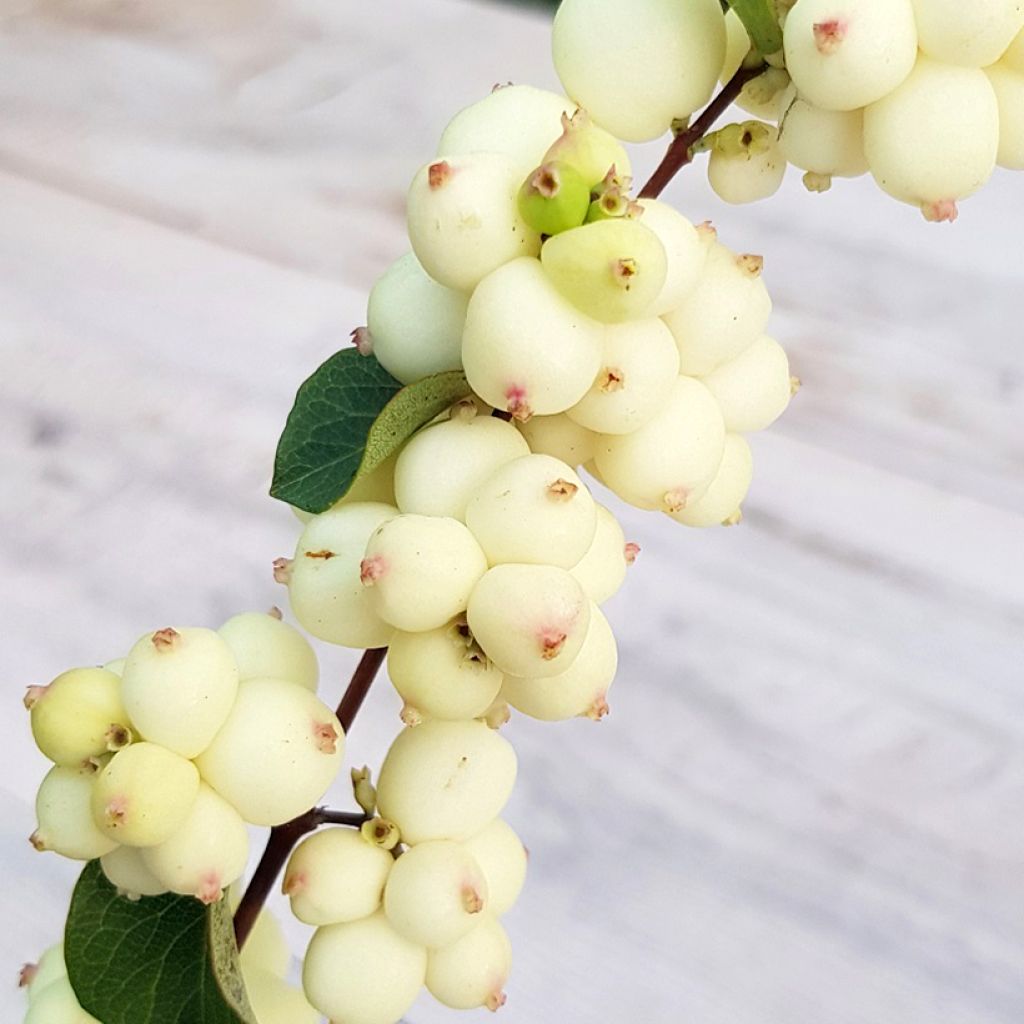

Symphorine - Symphoricarpos orbiculatus Symphony Rock
Symphoricarpos orbiculatus Symphony Rock
Symphoricarpos orbiculatus Symphony Rock 'GR16LW'
Coralberry, Indian Currant, Buckbrush
Special offer!
Receive a €20 voucher for any order over €90 (excluding delivery costs, credit notes, and plastic-free options)!
1- Add your favorite plants to your cart.
2- Once you have reached €90, confirm your order (you can even choose the delivery date!).
3- As soon as your order is shipped, you will receive an email containing your voucher code, valid for 3 months (90 days).
Your voucher is unique and can only be used once, for any order with a minimum value of €20, excluding delivery costs.
Can be combined with other current offers, non-divisible and non-refundable.
Home or relay delivery (depending on size and destination)
Schedule delivery date,
and select date in basket
This plant carries a 24 months recovery warranty
More information
We guarantee the quality of our plants for a full growing cycle, and will replace at our expense any plant that fails to recover under normal climatic and planting conditions.
Would this plant suit my garden?
Set up your Plantfit profile →
Description
The Symphoricarpos 'Symphony Rock' is a variety of snowberry that is distinguished by its long flowering and particularly durable white fruiting. Quite discreet in spring, heavily visited by bees in summer, this deciduous bush is adorned with clusters of small white berries from late summer, a decorative fruiting that persists on the branches until winter. Comfortable in both sun and shade, adaptable in a wide range of soils, low-maintenance, useful for small wildlife, it makes an excellent free hedge or margin plant for a wooded garden.
The Symphoricarpos orbiculatus Symphony Rock is a recent Dutch horticultural selection. It is part of a series of snowberries selected for their ease of maintenance, resistance to fungal diseases, and long-lasting flowering. The species is native to the eastern and central United States as well as central Canada and northeastern Mexico. The plant thrives in soils close to neutrality (slightly acidic to slightly alkaline), whether they are clayey and very moist or, on the contrary, quite dry in summer. Snowberries belong to the caprifoliaceae family, just like honeysuckles.
The Symphoricarpos 'Symphony Rock' is a shrub with a very bushy, upright but flexible, dense habit, capable of propagating by spontaneous layering, with branches rooting at the nodes when they come into contact with the ground. Its growth is moderately fast, and the plant will reach a height of about 90 cm (35in) with a width of 90 cm (35in) to 1 m (3ft) at maturity. The foliage is late deciduous, often turning purplish violet in autumn before falling. It consists of small oval-rounded leaves, dark green on the upper surface but lighter green on the lower surface. Flowering occurs from late July to September. It takes the form of numerous small funnel-shaped flowers appearing in the axils of the leaves, whitish green tinged with pink. After pollination by insects, they give way to numerous small berries measuring 6 mm (<1in) in diameter, pearly white when ripe, very decorative and sought after by some birds.
Snowberries are known for their robustness and beautiful winter fruiting. This one will be appreciated for its easy cultivation, rustic character, and long-lasting and brightly colored fruiting. It blends easily into a free hedge or a large shrub bed without pretension, in a garden that leaves room for nature. Many other deciduous or evergreen shrubs, with flowers or berries, will accompany it: spireas, dogwoods, viburnums, shrubby honeysuckles, cotoneasters, botanical roses, euonymus, ornamental cherries and apples, hawthorns, or Berberis!
Plant habit
Flowering
Foliage
Botanical data
Symphoricarpos
orbiculatus
Symphony Rock 'GR16LW'
Caprifoliaceae
Coralberry, Indian Currant, Buckbrush
Cultivar or hybrid
Other Symphoricarpos
View all →Planting and care
The 'Symphony Rock' Symphorine adapts to almost any exposure: it tolerates shade well, but will be more floriferous and fruitful in partial shade or in the sun. In warm regions, avoid the scorching afternoon sun. It is a hardy and easy-to-grow bush that is suitable for any balanced garden soil, that is, neither too acidic nor too chalky. It even tolerates clayey and humid soils or, on the contrary, dry and root-infested soils found under large trees and at the base of hedges. You can do pruning in late winter.
Planting period
Intended location
Care
Planting & care advice
This item has not been reviewed yet - be the first to leave a review about it.
Similar products
Haven't found what you were looking for?
Hardiness is the lowest winter temperature a plant can endure without suffering serious damage or even dying. However, hardiness is affected by location (a sheltered area, such as a patio), protection (winter cover) and soil type (hardiness is improved by well-drained soil).

Photo Sharing Terms & Conditions
In order to encourage gardeners to interact and share their experiences, Promesse de fleurs offers various media enabling content to be uploaded onto its Site - in particular via the ‘Photo sharing’ module.
The User agrees to refrain from:
- Posting any content that is illegal, prejudicial, insulting, racist, inciteful to hatred, revisionist, contrary to public decency, that infringes on privacy or on the privacy rights of third parties, in particular the publicity rights of persons and goods, intellectual property rights, or the right to privacy.
- Submitting content on behalf of a third party;
- Impersonate the identity of a third party and/or publish any personal information about a third party;
In general, the User undertakes to refrain from any unethical behaviour.
All Content (in particular text, comments, files, images, photos, videos, creative works, etc.), which may be subject to property or intellectual property rights, image or other private rights, shall remain the property of the User, subject to the limited rights granted by the terms of the licence granted by Promesse de fleurs as stated below. Users are at liberty to publish or not to publish such Content on the Site, notably via the ‘Photo Sharing’ facility, and accept that this Content shall be made public and freely accessible, notably on the Internet.
Users further acknowledge, undertake to have ,and guarantee that they hold all necessary rights and permissions to publish such material on the Site, in particular with regard to the legislation in force pertaining to any privacy, property, intellectual property, image, or contractual rights, or rights of any other nature. By publishing such Content on the Site, Users acknowledge accepting full liability as publishers of the Content within the meaning of the law, and grant Promesse de fleurs, free of charge, an inclusive, worldwide licence for the said Content for the entire duration of its publication, including all reproduction, representation, up/downloading, displaying, performing, transmission, and storage rights.
Users also grant permission for their name to be linked to the Content and accept that this link may not always be made available.
By engaging in posting material, Users consent to their Content becoming automatically accessible on the Internet, in particular on other sites and/or blogs and/or web pages of the Promesse de fleurs site, including in particular social pages and the Promesse de fleurs catalogue.
Users may secure the removal of entrusted content free of charge by issuing a simple request via our contact form.
The flowering period indicated on our website applies to countries and regions located in USDA zone 8 (France, the United Kingdom, Ireland, the Netherlands, etc.)
It will vary according to where you live:
- In zones 9 to 10 (Italy, Spain, Greece, etc.), flowering will occur about 2 to 4 weeks earlier.
- In zones 6 to 7 (Germany, Poland, Slovenia, and lower mountainous regions), flowering will be delayed by 2 to 3 weeks.
- In zone 5 (Central Europe, Scandinavia), blooming will be delayed by 3 to 5 weeks.
In temperate climates, pruning of spring-flowering shrubs (forsythia, spireas, etc.) should be done just after flowering.
Pruning of summer-flowering shrubs (Indian Lilac, Perovskia, etc.) can be done in winter or spring.
In cold regions as well as with frost-sensitive plants, avoid pruning too early when severe frosts may still occur.
The planting period indicated on our website applies to countries and regions located in USDA zone 8 (France, United Kingdom, Ireland, Netherlands).
It will vary according to where you live:
- In Mediterranean zones (Marseille, Madrid, Milan, etc.), autumn and winter are the best planting periods.
- In continental zones (Strasbourg, Munich, Vienna, etc.), delay planting by 2 to 3 weeks in spring and bring it forward by 2 to 4 weeks in autumn.
- In mountainous regions (the Alps, Pyrenees, Carpathians, etc.), it is best to plant in late spring (May-June) or late summer (August-September).
The harvesting period indicated on our website applies to countries and regions in USDA zone 8 (France, England, Ireland, the Netherlands).
In colder areas (Scandinavia, Poland, Austria...) fruit and vegetable harvests are likely to be delayed by 3-4 weeks.
In warmer areas (Italy, Spain, Greece, etc.), harvesting will probably take place earlier, depending on weather conditions.
The sowing periods indicated on our website apply to countries and regions within USDA Zone 8 (France, UK, Ireland, Netherlands).
In colder areas (Scandinavia, Poland, Austria...), delay any outdoor sowing by 3-4 weeks, or sow under glass.
In warmer climes (Italy, Spain, Greece, etc.), bring outdoor sowing forward by a few weeks.








































